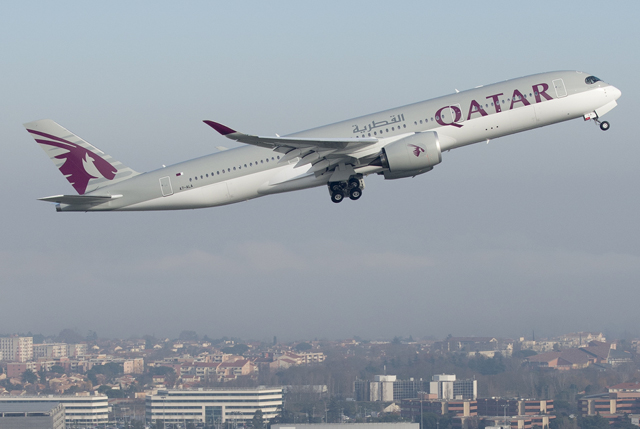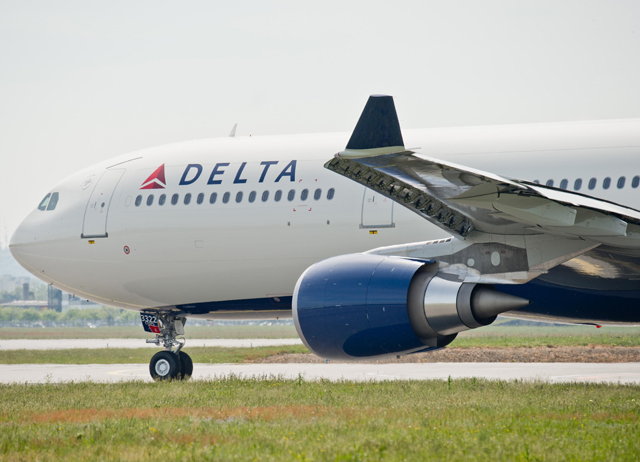A year ago, as the Farnborough air show approached, Airbus's long-haul strategy looked to be in disarray.
One of the biggest customers for its A350 XWB, Emirates, had suddenly cancelled an order for 50 -900s and 20 -1000s, while the smallest A350 – the 280-seat -800 – had so few customers left that the variant looked doomed. Toulouse's decision to take on both the Boeing 787 and the 777 with one aircraft family looked ambitious at best – even more so since the launch of the 777X at the end of 2013.
At the same time, the A330 – the best-selling small twin-aisle aircraft ever – appeared to be running out of steam almost three decades after its launch, while its A340 stablemate – designed to appeal to airlines that wanted the range, payload and reassurance that four engines offered – had long-since fallen victim to high fuel prices. Finally, Airbus's flagship A380 was failing to win the "Queen of the Skies" crown once worn by the 747-400; the elite of the long-haul world, other than Emirates, were either committing in modest numbers or showing little interest.

Qatar Airways began flying the A350-900 earlier this year
Airbus
Twelve months on, Toulouse's widebody prospects look much more healthy. Airlines may remain unconvinced about an ultra-large aircraft, but Airbus's next two biggest twin-aisles, the A350-1000 and -900, have continued to sell well, despite the Emirates cancellation, with orders approaching 780 units. Meanwhile, the decision to launch at Farnborough two variants of a re-engined A330 powered exclusively by Rolls-Royce Trent 7000s appears to have given momentum to Airbus's small widebody. The A330neo has racked 145 orders.
The A350-900 entered service earlier this year with Qatar Airways and, with three aircraft in operation, the type is performing well, says Airbus. Another 15 A350s are to be delivered by year-end, including to three new operators: Vietnam Airlines, Finnair and TAM. Early next year, the first A350-1000s will move into final production, with first flight of the larger variant in the middle of the year and entry into service in 2017. Production should steady out at rate 10 around 2019, says Didier Evrard, Airbus's head of programmes.
Although Airbus faces huge manufacturing upheavals, particularly the ramp-up of its narrowbodies, chief executive Fabrice Bregier was speaking only half in jest at a media briefing in Toulouse in May when he described the company these days as "boring". Having climbed the exhausting engineering Everests of bringing the A380 and A350 to market, Airbus now finds itself with widebody priorities that include handling two ramp-ups (and a ramp-down); ensuring that three new variants – the A350-1000, A330-900neo and A330-800neo – enter service smoothly; and, not least, finding new customers.
Not that these are minor challenges. The manufacturing transition from the "A330ceo" (current engine option) to the A330neo will be relatively painless as there is much commonality between the variants. However, the Trent 7000 is a much bigger engine, with a larger fan and double the bypass ratio. Other structural changes to the aircraft include sharklets. As Airbus prepares to introduce the A330-900neo to service at the end of 2017 – with the -800 following a year later – it must also take care to bridge the gap by keeping up production of the current model.

New variants of the A330 will be powered by Rolls-Royce Trent 7000s
Airbus
Output of the A330ceo has dropped to six a month, a rate that Airbus will be keen to hold to as the backlog shrinks. That will depend on sales success this year, something Airbus's sales chief John Leahy hinted at during the May briefing: "You will see some A330ceo orders announced by the air show," he said. His fellow chief operating officer, Tom Williams, who is in charge of Airbus manufacturing, has faith in his colleague. "We have the best salesman in the world and if John thinks he can sell enough to keep the A330ceo at rate six, I'm confident we can," says WIlliams.
New versions of the A330ceo will help. A team from Delta Air Lines arrived in Toulouse during May's media briefing to take delivery of the first 242t maximum take-off weight (MTOW) version of the A330-300. The option – which offers a 2% fuel-burn reduction and an extended range of 6,100nm by way of a series of design tweaks such as shortened flap-track fairings and a reshaped slat one – was launched in 2012 and has been sold to 11 customers. The variant recently received EASA and US Federal Aviation Administration certification.
Airbus took the opposite approach to launch in 2013 what it calls the A330 Regional, a high-density aircraft tailored for shorter routes through a reduction in its MTOW. Toulouse has already identified Chinese airlines as potential customers and, at the briefing, Leahy said Airbus was pursuing "several campaigns", adding: "I expect to have an announcement by the [Paris] air show." Five A330s will also be used as the basis for new in-house Beluga XL transports, the first of which will begin to replace the current fleet of A300-600-based outsized cargo aircraft in 2019.
Although the pain of design, certification and entry into service is over for the A350, a tougher task for Airbus now is ramping up production and introducing the -900's larger sibling. Systems installation architecture is in place and assembly of A350-1000 subcomponents – including the centre wing-box, pylon and Section 15 lateral junction panels – has begun. Meanwhile, what Airbus calls "pre-final assembly line" work will start in August, ahead of the first test aircraft arriving on the final assembly line proper early in 2016.
Over at Rolls-Royce, the first Trent XWB-97 (the -84 powers the A350-900) destined to fly on the Airbus A380 flying testbed has reached the "final stages of assembly" and will be delivered to Toulouse in July. The variant – which among the Trents has the largest fan diameter yet – had its first engine run in July 2014 and four engines have already completed the test programme. "The flight-test engine is very close to certification standard," says Simon Burr, the UK manufacturer's chief operating officer for civil large engines. "Our whole strategy has been to get plenty of testing into this engine."
When it comes to marketing widebodies, Airbus's big themes will continue to be the breadth of its range and the breadth of its cabins. Even before the A330neo launch, Leahy was insisting that Airbus's offering of essentially the A330, two A350s (if you discount the -800) and the A380 was more than a match for Boeing's three 787s, two 777s and the 747-8, especially as, he suggests, the longer-range version of the A321 is a possible rival for the 787-8. The A330neo has now given Airbus a more credible competitor to the 787-8 and 787-9.

Delta Air Lines has taken delivery of the first 242t MTOW version of the A330-300
Airbus
"Better comfort in every cabin" is Airbus's other mantra around the Paris air show, with the airframer building on its advertising campaign of last year, which stressed its use of 18in economy-class seats in both the A330 and A350. Almost every 787 has been delivered with 17in seats, says Airbus, and the only way Boeing will be able to compete with the A350-1000's economics is by having 10-abreast economy cabins with 17in seats as opposed to Airbus's nine 18in seats.
While Boeing's widebody offering remains a force to be reckoned with – the 777X being likely to continue where the 777-300ER left off as the leader in the ultra-long-haul market – Airbus is holding its ground: the A350 and A330neo, between them, are taking a 40% share of latest-generation widebody orders, against 60% for the 787 and 777X combined. And when it comes to its next new product development, Toulouse may consider that a stretch of its A350-1000 – an A350-1100 – may do better in capturing more long-haul dollars in the 2020s than an A380neo.
Additional reporting by David Kaminski-Morrow
Check out the latest news, analysis and opinion from this year's Paris air show
Source: Flight International
















